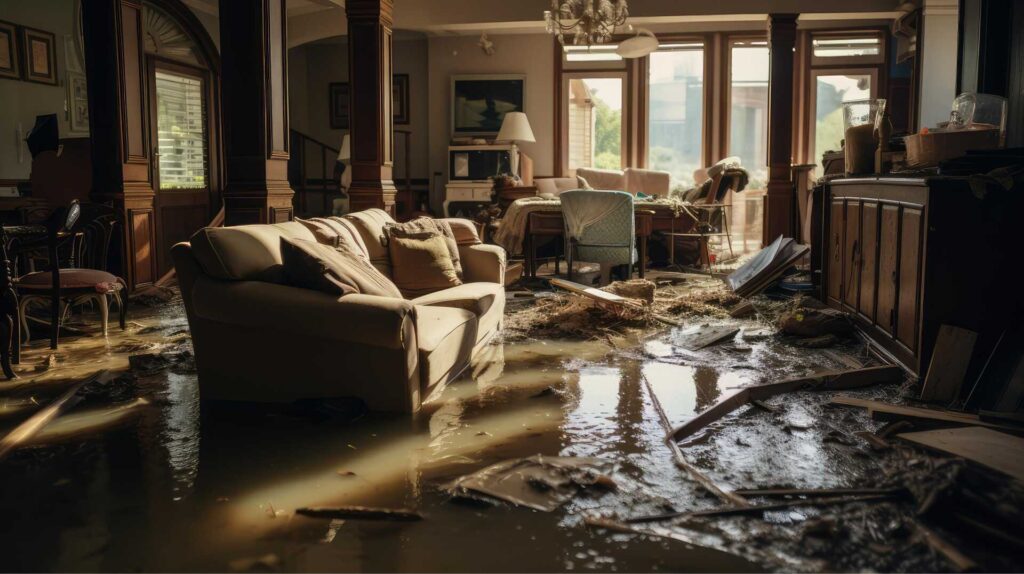
Contents
When floods strike, the water can feel like an uninvited guest that just won’t leave. Swift and strategic water removal is crucial to minimizing damage and restoring your space. Utilizing a submersible pump, wet/dry vacuums, and dehumidifiers can make all the difference in your emergency response. Each method plays a vital role in extracting water efficiently and preventing further issues like mold growth. Understanding how to implement these techniques properly can significantly impact your recovery process. Need fast and effective water removal? Here’s how to get started.
Key Takeaways
- Use a submersible pump to efficiently extract water, positioning it in the deepest flooding area for optimal results.
- Employ a wet/dry vacuum with a powerful motor to remove water from various surfaces, ensuring regular maintenance for maximum suction.
- Set dehumidifiers in high-humidity areas to control moisture levels, keeping windows and doors closed to enhance effectiveness.
- Continuously monitor for remaining moisture after water removal to prevent mold growth and address damp areas promptly.
- Prioritize safety by wearing protective gear and avoiding electrical hazards while operating water removal equipment.
Pumping Out Water
To effectively remove water from a flooded area, start by employing a submersible pump. This device is engineered for efficient water extraction, making it crucial for effective flood management.
First, identify the water’s depth and verify the pump’s capacity meets your needs. After positioning the pump in the deepest section of the flooded area, connect it to a power source, ensuring safety measures are in place.
Once operational, monitor the pump’s output to prevent any clogs or interruptions. It’s important to keep the discharge hose directed away from your property to avoid re-flooding.
As the water level drops, periodically check for remaining moisture, as it can lead to mold growth if not addressed.
Using Wet/Dry Vacuums
Wet/dry vacuums are versatile tools for tackling residual water after a flooding event. Their robust design allows you to efficiently remove water from various surfaces, including carpets and hard floors.
When choosing a wet/dry vacuum, look for features like a powerful motor, a large capacity tank, and multiple attachments for different cleaning scenarios.
Before you start, verify your vacuum is in good condition; check the filter and hose for any blockages.
While vacuuming, maintain a steady pace to maximize suction and efficiency.
After use, follow vacuum maintenance tips such as cleaning the filter and emptying the tank to prevent mold growth and maintain performance.
Employing Dehumidifiers
After removing standing water with a wet/dry vacuum, employing dehumidifiers is essential for addressing lingering moisture in the environment.
You need to strategically place dehumidifiers in areas with the highest humidity levels, such as basements and near wet walls. This targeted dehumidifier placement maximizes efficiency, ensuring effective moisture control throughout the affected space.
Set the dehumidifiers to the ideal humidity level—around 30-60%—to promote a balanced environment. Keep doors and windows closed to prevent external moisture from entering, which can hinder your efforts.
Regularly empty the water tanks or set up a drainage hose for continuous operation.
Monitor the moisture levels with a hygrometer to track your progress.
Summary
Tackling floodwaters requires a multi-faceted approach. By efficiently pumping out water, utilizing wet/dry vacuums for those tricky spots, and employing dehumidifiers to stave off mold, you can reclaim your space. Think of these techniques as your lifeline, each playing an essential role in restoring your environment. Act quickly and methodically to minimize damage, ensuring your home remains a safe haven rather than a soggy memory. Your proactive efforts will make all the difference.
Recent Posts
10 DIY Tips for Emergency Water Extraction
Most people underestimate the urgency of addressing water damage immediately after it occurs. Quick action
Essential DIY Water Extraction Tips for Homeowners
When water damage strikes, it’s vital to act quickly and safely. You need to assess
3 Best DIY Water Extraction Tips for Homeowners
When water damage strikes your home, quick action, effective methods, and proper water extraction for
